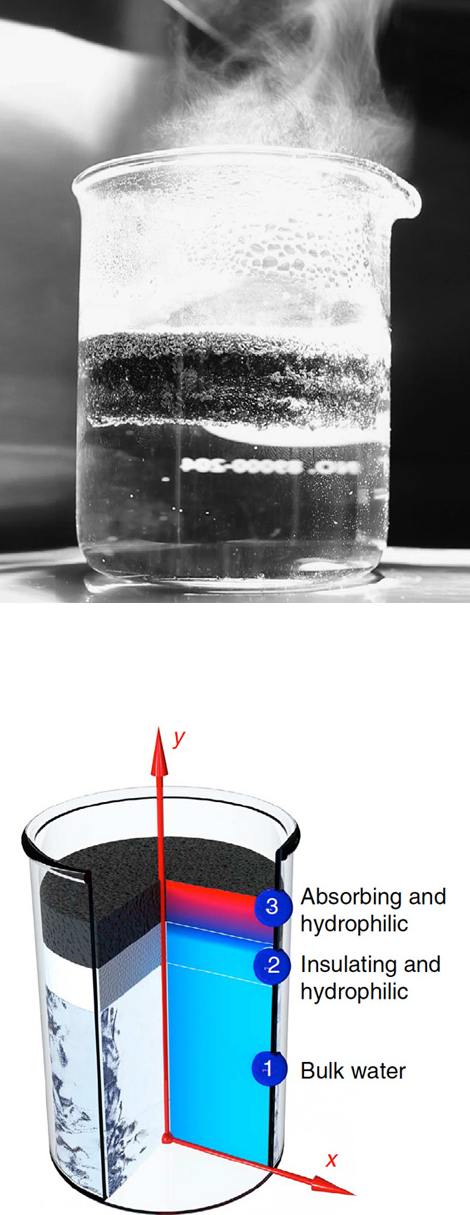Nano-structure builds big solar possibilities
 A new material turns the sun to steam - a seemingly strange behaviour but one which could provide exciting new energy options.
A new material turns the sun to steam - a seemingly strange behaviour but one which could provide exciting new energy options.
The material structure is the result of a cutting-edge nano-tech project from MIT.
The structure — a layer of graphite flakes and an underlying carbon foam — is a porous, insulating material structure that floats on water.
When sunlight hits the its surface, a hotspot forms in the graphite, drawing water up through the material’s pores, where it evaporates as steam.
The brighter the light, the more steam is generated.
The new material can convert 85 per cent of incoming solar energy into steam — a big improvement over recent approaches to solar-powered steam generation.
Even better, the setup loses very little heat in the process, and can produce steam at relatively low solar intensity.
Researchers say that if it were scaled up, the material would be able to concentrate sunlight without costly or complicated mechanisms.
Steam generation is a vital part of current solar power setups, but the vast fields of mirrors or lenses tend to suffer from heat loss, leading to inefficient steam generation.
By contrast, the MIT team estimates their approach can generate steam at a solar intensity about 10 times that of a sunny day.
The approach itself is relatively simple; since steam comes from the surface of a liquid, the team made a material to both efficiently absorb sunlight and generate steam at its surface.
After trials with multiple materials the team settled on a thin, double-layered, disc-shaped structure.
Its top layer is made from graphite exfoliated by a microwave.
This creates popcorn-like graphite bubbles, which burst to form a nest of flakes. The result is a highly porous material that can better absorb and retain solar energy.
As sunlight hits the structure, it creates a hotspot in the graphite layer, generating a pressure gradient that draws water up through the carbon foam. As water seeps into the graphite layer, the heat concentrated in the graphite turns the water into steam.
The researchers tested the structure by placing it in a chamber of water and exposing it to a solar simulator - a light source that simulates various intensities of solar radiation.
They found they were able to convert 85 per cent of solar energy into steam at a solar intensity 10 times that of a typical sunny day.








 Print
Print